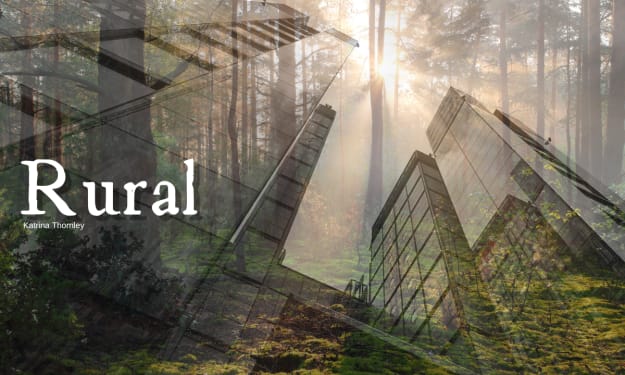Content warning
This story may contain sensitive material or discuss topics that some readers may find distressing. Reader discretion is advised. The views and opinions expressed in this story are those of the author and do not necessarily reflect the official policy or position of Vocal.
Futurism and Its Vision for Tomorrow
Exploring the Core Principles, Key Figures, Artistic Impact, and Global Influence of the Futurist Movement
Futurism, an avant-garde movement born in the early 20th century, was marked by a fervent belief in progress and innovation. It sought to break free from the constraints of tradition and embrace the new, particularly the rapid technological advancements of the era. This article explores the core principles of futurism, its main proponents, its influence on various artistic disciplines, and its enduring legacy.
The Core Principles of Futurism
At its heart, futurism was a celebration of modernity. The movement's proponents believed in the power of technology and industry to transform society. They glorified speed, machinery, and violence, viewing war as a means to cleanse the world of outdated values. The Futurist Manifesto, penned by Filippo Tommaso Marinetti in 1909, outlined these principles with fervor. Marinetti called for a rejection of the past, museums, and libraries, advocating instead for an art that embraced the dynamism of the modern world (Smithsonian Magazine).
Key Figures of the Futurist Movement
The futurist movement was spearheaded by a group of passionate and radical thinkers and artists, each contributing unique perspectives and works that defined the movement.
Filippo Tommaso Marinetti: The founder of futurism, Marinetti was a poet and writer whose Futurist Manifesto ignited the movement. His vision was one of relentless innovation and a break from the past. Marinetti’s works often employed experimental techniques, such as free verse and typographical experimentation, to convey the energy and chaos of modern life (Smithsonian Magazine) (Khan Academy).
Umberto Boccioni: A leading painter and sculptor in the futurist movement, Boccioni sought to depict movement and speed in his works. His sculptures, such as Unique Forms of Continuity in Space, and paintings like The City Rises, are iconic representations of futurist aesthetics, capturing the fluidity and dynamism of the modern era (Khan Academy) (Routledge Encyclopedia of Modernism).
Giacomo Balla: Another prominent futurist painter, Balla focused on capturing the essence of movement. His works, such as Dynamism of a Dog on a Leash and Abstract Speed + Sound, are celebrated for their innovative use of color and form to depict motion and energy (Khan Academy).
Luigi Russolo: A key figure in futurist music, Russolo’s manifesto The Art of Noises advocated for the inclusion of industrial sounds in musical composition. He invented noise-generating instruments called intonarumori, which expanded the boundaries of music and influenced later developments in experimental and electronic music (Khan Academy) (Routledge Encyclopedia of Modernism).
The Impact of Futurism on Art and Literature
Futurism’s influence extended across various artistic disciplines, inspiring new forms of expression and challenging traditional aesthetics.
Visual Arts: Futurist painters and sculptors sought to convey the dynamism of modern life through their works. They employed techniques such as fragmentation, vibrant colors, and abstract forms to capture the sense of movement and speed. This departure from traditional representational art laid the groundwork for later abstract and modernist movements (Khan Academy).
Literature: Futurist writers broke free from conventional narrative structures and experimented with language and form. Marinetti’s Zang Tumb Tumb exemplifies this approach, using onomatopoeia, fragmented text, and unconventional typography to create a sense of dynamism. Futurist literature sought to evoke the chaos and energy of the modern world, influencing subsequent avant-garde movements such as Dadaism and Surrealism (Routledge Encyclopedia of Modernism).
Music: Luigi Russolo’s The Art of Noises revolutionized the concept of music by incorporating industrial sounds. His intonarumori instruments produced a range of noises, from mechanical hums to explosive bangs, challenging traditional notions of harmony and melody. This experimentation paved the way for future developments in electronic and experimental music (Khan Academy) (Routledge Encyclopedia of Modernism).
Futurism’s Influence on Architecture and Design
Futurist principles also extended to architecture and design, where they envisioned a radical transformation of urban environments.
Antonio Sant’Elia: A leading futurist architect, Sant’Elia proposed visionary designs for modern cities characterized by bold geometric forms, extensive use of glass and steel, and integration of new technologies such as elevators and electricity. Although many of his designs were never realized, his ideas influenced later developments in modernist architecture and urban planning (Khan Academy) (Routledge Encyclopedia of Modernism).
Fortunato Depero: In design, Fortunato Depero applied futurist principles to advertising and commercial art. His dynamic compositions and bold typography broke away from traditional design aesthetics, creating visually striking and innovative works that resonated with the spirit of futurism (Khan Academy) (Routledge Encyclopedia of Modernism).
The Global Reach and Adaptation of Futurism
While futurism originated in Italy, its influence quickly spread across Europe and beyond, inspiring a variety of adaptations and movements.
Russian Futurism: In Russia, futurism took on a unique character, blending with the country’s cultural and political landscape. Led by figures such as Vladimir Mayakovsky and Velimir Khlebnikov, Russian Futurism emphasized formal innovation and a connection to Russia’s ancient past. The movement’s provocative manifestos and public performances gained notoriety and influenced subsequent artistic developments in Russia (Routledge Encyclopedia of Modernism).
International Influence: Futurism’s emphasis on innovation and breaking with tradition resonated with artists and thinkers worldwide. Elements of futurist thought can be seen in movements such as Vorticism in Britain and Precisionism in the United States. These movements adopted and adapted futurist principles to their own cultural contexts, further spreading the impact of futurism on global art and culture (Routledge Encyclopedia of Modernism).
The Decline and Legacy of Futurism
The outbreak of World War I and the subsequent political upheavals marked the beginning of the end for the futurist movement. The war’s devastation and the rise of fascism in Italy, with which some futurists initially aligned, led to disillusionment and fragmentation within the movement. Despite this decline, the legacy of futurism endures in contemporary art and culture.
Modern Art and Design: Futurism’s emphasis on innovation, speed, and technology continues to influence modern art and design. Elements of futurist aesthetics can be seen in the works of contemporary artists and designers who explore themes of movement, dynamism, and the impact of technology on society (Khan Academy).
Cultural and Technological Discourse: Futurism’s exploration of the relationship between humanity and technology remains relevant in today’s rapidly changing world. The movement’s ideas continue to inform discussions about the future, the role of technology, and the potential for innovation to reshape society (Khan Academy).
Conclusion
Futurism was a revolutionary movement that sought to redefine art, literature, music, architecture, and design in the context of a rapidly changing world. Its radical principles and innovative techniques challenged traditional forms and inspired a wide range of subsequent movements and developments. While the movement itself eventually declined, its impact and legacy continue to resonate, offering valuable insights into the relationship between art, technology, and society.
About the Creator
Enjoyed the story? Support the Creator.
Subscribe for free to receive all their stories in your feed. You could also pledge your support or give them a one-off tip, letting them know you appreciate their work.







Comments
There are no comments for this story
Be the first to respond and start the conversation.